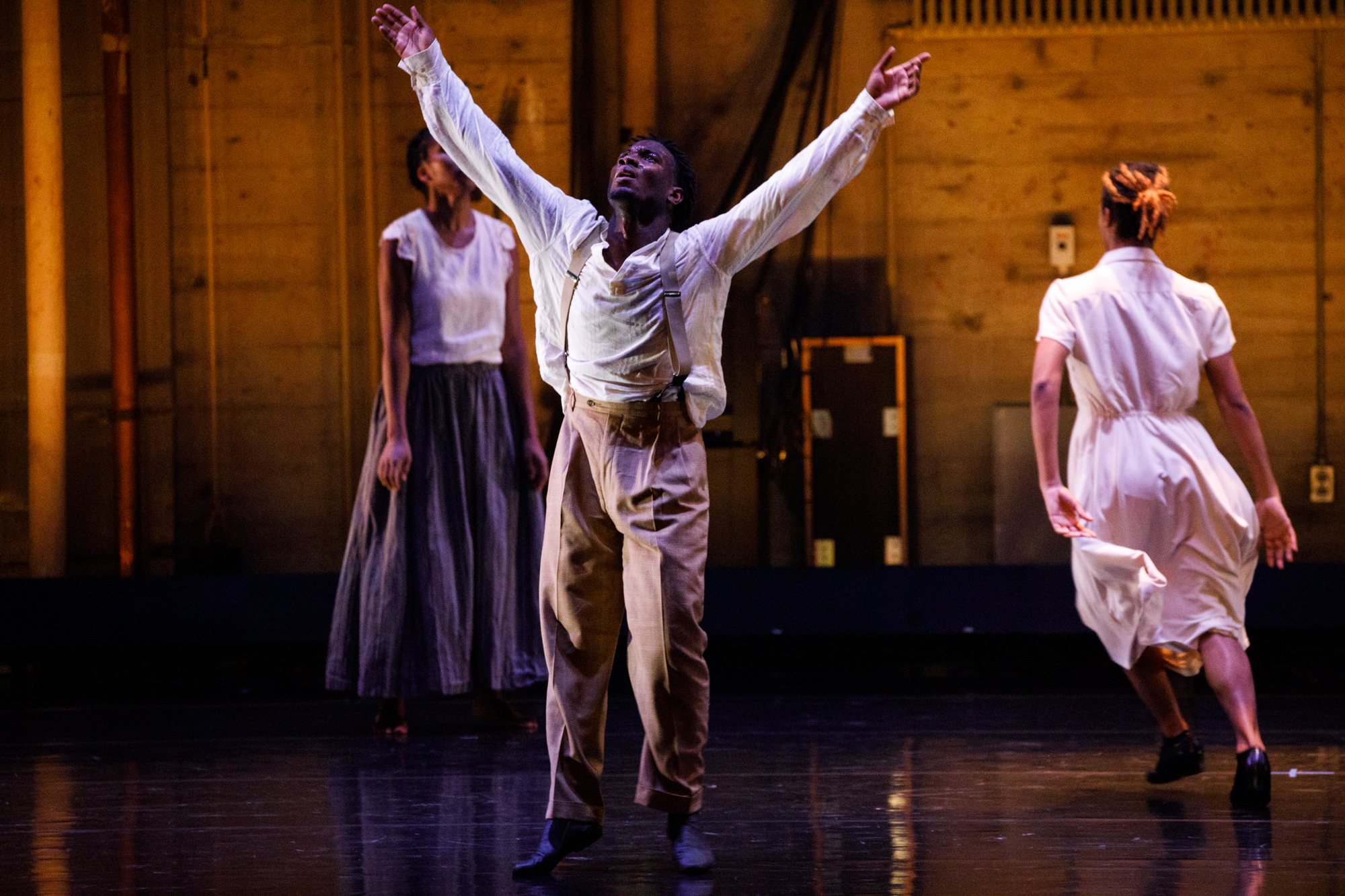The performance features many narrative vignettes, some are highly abstract. Joe Addison // AS Review
By Eva Bryner
As a part of Black History month, Seattle-based Spectrum Dance Company visited Western on Feb. 20 and 21 to perform their piece, “Strange Fruit,” choreographed by Donald Byrd.
The piece melds theater and dance to deliver its poignant and powerful response to the violent and racist acts of lynching that are embedded in United States history, specifically in the Jim Crow era.
“Dance is THEATER, just movement driven as opposed to text-driven. We are Spectrum Dance Theater so much of my work at Spectrum takes this method/approach,” Byrd said via email.
“Strange Fruit” is thematically dark, with flashing lights, static sounds, yelling and fast-paced chanting lending to the sporadic and chaotic tone that carries through the 45-minute long performance.

“We’re dealing with subject matter that is the lived experience of many people and many people’s relatives and generations of trauma in this country and around the world,” Nea-Amina Minor, a company artist, said during a Q&A session after the performance.
The piece takes its title from the poem and famous song, originally by Abel Meeropol and later popularized by Billie Holiday.
Byrd’s choreography is chilling, with moments of calm continuously interrupted by fast-paced, rhythmic and repetitive sequences.
The piece centers around three Black dancers, Nea-Amina Minor, Mikhail Callise and Michele Dooley.
Minor serves as a guardian figure throughout the piece, while Callise and Dooley are constantly watched and surrounded by the other dancers. At various points the two lift one another up physically and emotionally, displaying moments of healing in between forced separation.
“I think so often with the history of lynching, the victims were not given the opportunity to be named, to be connected to families and to relatives, to be connected to community,” Minor said. “They weren’t seen as human. So, that is an essential part in this piece that [Byrd] put forward, is creating a relationship between two victims.”

The other 11 performers dawn white masks to represent whiteness, anonymity, mob mentality and the histories of community violence.
“The superficial idea is this idea of whiteness, the skin tone of it is intentional… but the idea for us was embodying the mob mentality,” Fausto Rivera, company member said. “When these lynchings were happening, it was almost a community.”
The piece itself rotates between isolating its dancers and uniting them in movement, forwarding the idea of a mob mentality. Often Callise and Dooley break away from the larger group, creating a chilling sense of othering alongside erratic group movement.
“The history of the spectacle of lynchings is widely known in the U.S., but particular to that was the ability for witnesses and participants to remain anonymous even to this day,” Minor said. “I think even memorializing those who suffered at the hands of mob violence, it usually doesn’t come with a recognition of who the assailant was.”
The piece features live vocals from Josephine Howell, adding a human touch to the prerecorded strings and static sounds.

“One of the most difficult things is to make sure that you deliver the truth, and hold on to enough of it that you don’t dismiss it, but let go of enough of it that it doesn’t tear you apart,” Howell said.
Byrd has been Artistic Director for Spectrum since 2002 and created works for many acclaimed dance companies throughout his career, including Alvin Ailey Dance Theater, The Joffrey Ballet and Dance Theatre of Harlem.
Spectrum was founded in 1982, with a mission statement aiming to bring high-quality dance education to a diverse array of people from all cultural, social and economic backgrounds. They also aim to make dance performances and dance education accessible to the community it serves.
Spectrum first visited Western in October 2015 for a residency and lecture series around Byrd’s work, “SHOT,” which focuses on the murders of Black and Brown people by law enforcement officers.
Spectrum has toured worldwide, however, this is their first performance at Western.

“The audiences on college campuses are younger, the emotional responses are similar, however, an older audience has more context not only for their emotional response but also more of a historical perspective as well,” Byrd said.
Spectrum’s performances came after a Q&A session Feb. 19 with Byrd as part of Western’s Black History Month events.
As for “Strange Fruit,” Byrd hopes the performance will have an impact beyond the theater doors.
“I hope they will walk away with more curiosity around the history of lynching and the lasting trauma of racial terrorism during the Jim Crow, post-Reconstruction era,” Byrd said via email. “Because without Acknowledgment of the horrors inflicted on black people in the United States, there can be no reconciliation, and without reconsideration, the “more perfect union” can never be achieved.”

